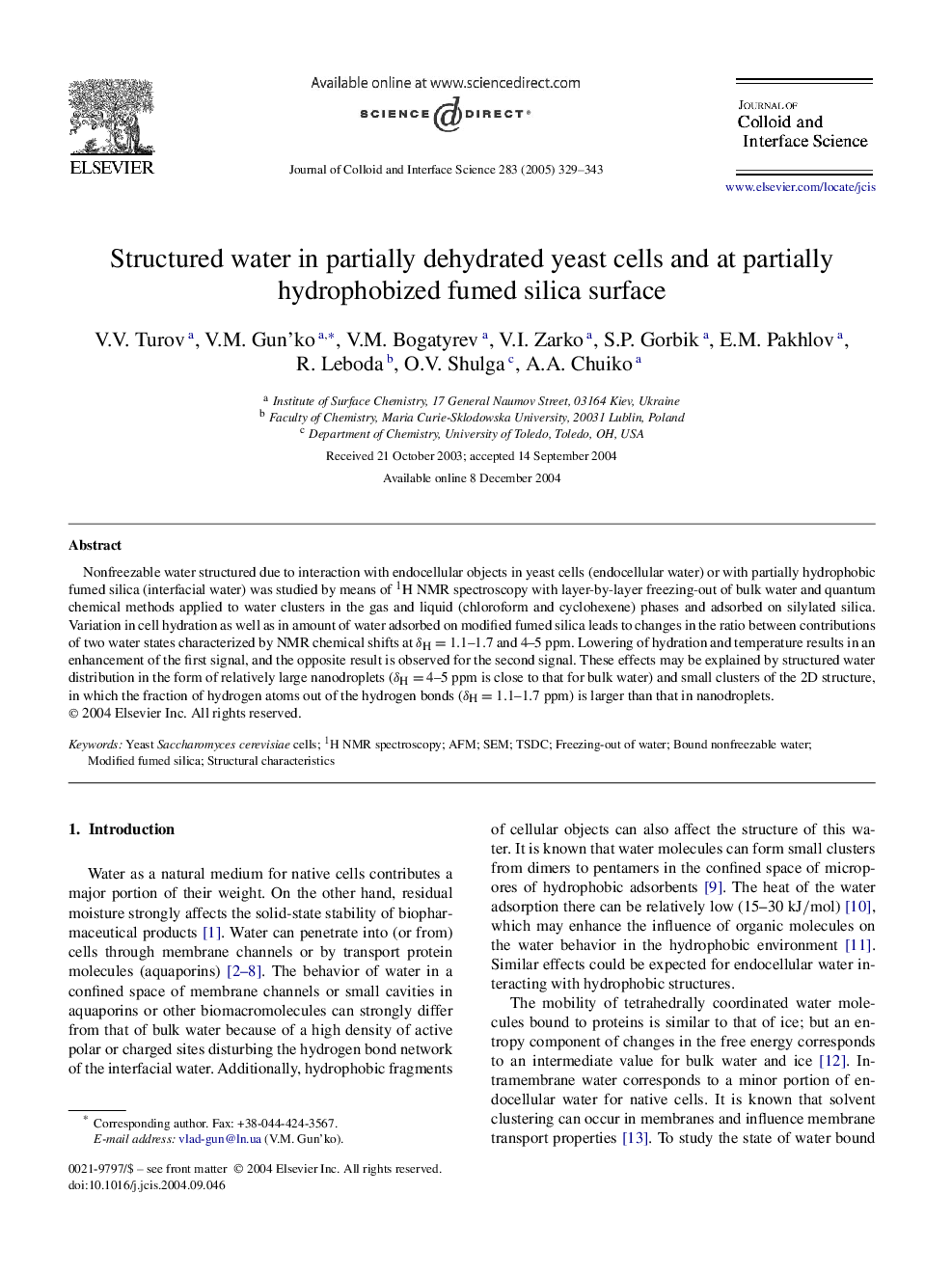| Article ID | Journal | Published Year | Pages | File Type |
|---|---|---|---|---|
| 10378377 | Journal of Colloid and Interface Science | 2005 | 15 Pages |
Abstract
Nonfreezable water structured due to interaction with endocellular objects in yeast cells (endocellular water) or with partially hydrophobic fumed silica (interfacial water) was studied by means of 1H NMR spectroscopy with layer-by-layer freezing-out of bulk water and quantum chemical methods applied to water clusters in the gas and liquid (chloroform and cyclohexene) phases and adsorbed on silylated silica. Variation in cell hydration as well as in amount of water adsorbed on modified fumed silica leads to changes in the ratio between contributions of two water states characterized by NMR chemical shifts at δH=1.1-1.7 and 4-5 ppm. Lowering of hydration and temperature results in an enhancement of the first signal, and the opposite result is observed for the second signal. These effects may be explained by structured water distribution in the form of relatively large nanodroplets (δH=4-5ppm is close to that for bulk water) and small clusters of the 2D structure, in which the fraction of hydrogen atoms out of the hydrogen bonds (δH=1.1-1.7ppm) is larger than that in nanodroplets.
Related Topics
Physical Sciences and Engineering
Chemical Engineering
Colloid and Surface Chemistry
Authors
V.V. Turov, V.M. Gun'ko, V.M. Bogatyrev, V.I. Zarko, S.P. Gorbik, E.M. Pakhlov, R. Leboda, O.V. Shulga, A.A. Chuiko,
